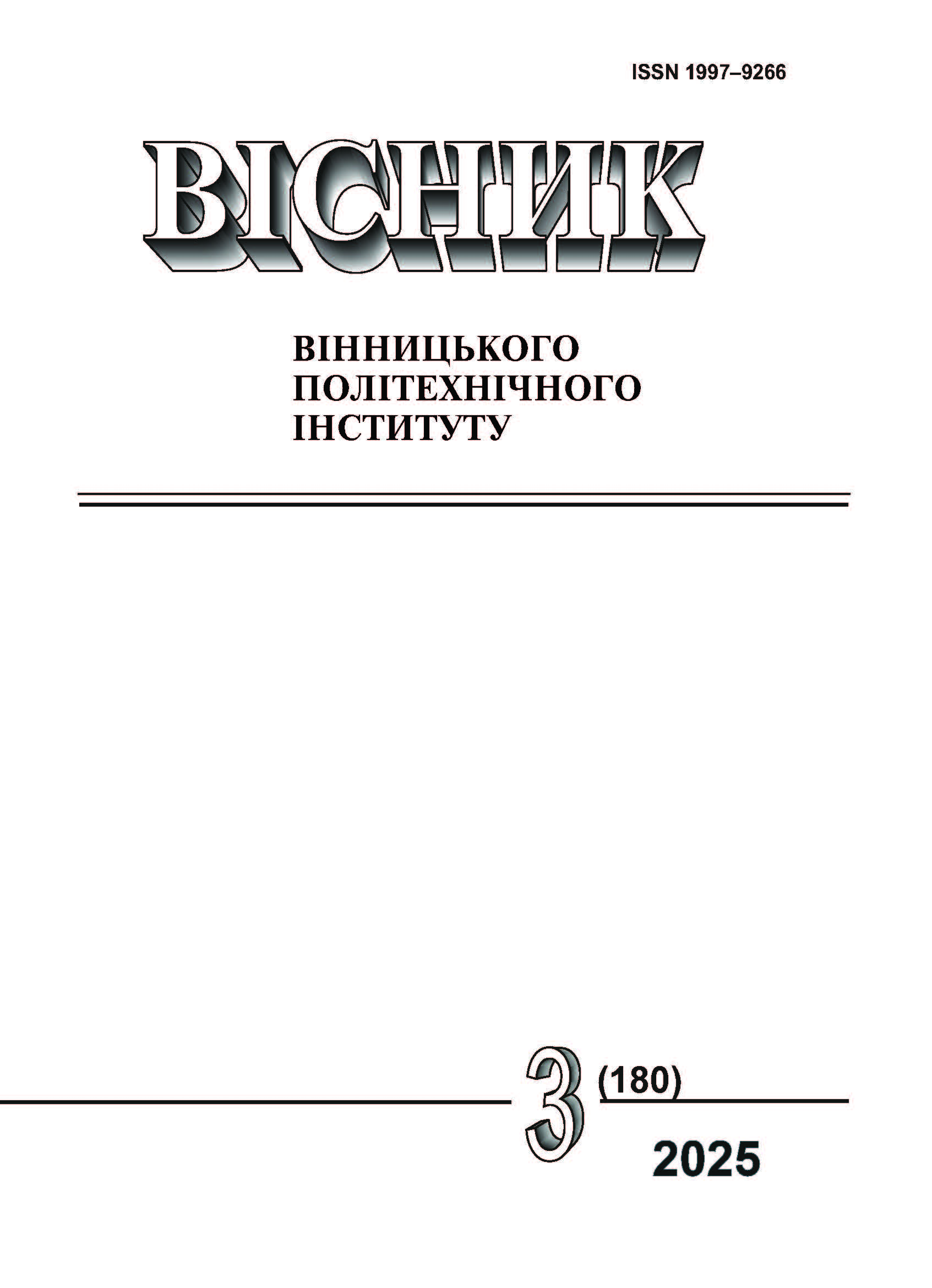Information Technology of Object Recognition and Localization Based on Weak Supervised Learning: Overview of Problems and Methods
DOI:
https://doi.org/10.31649/1997-9266-2025-180-3-111-120Keywords:
weakly supervised learning, object recognition, localization, integrated approach, uncertainty, segmentation, SAMAbstract
In modern period , marked by the exponential growth of digital data and computing resources, the search for reliable object recognition and localization systems has become an increasingly important task in many fields, covering industrial automation, healthcare automation, environmental monitoring, etc. Traditionally, the development of such a system has relied heavily on the acquisition and processing of large datasets annotated with ground-truth labels, a labor-intensive and costly manual process. However, the paradigmatic form of weakly supervised learning (WSL) has catalyzed a profound transformation in this landscape, offering a compelling alternative way by which machine learning models can be trained on less precise or ambiguous forms of supervision.
Abandoning the strict view inherent in WSL not only eases the burdensome annotation process, but also extends the scope of machine learning techniques to scenarios where obtaining accurate annotations is impractical, too expensive, or simply impossible. This shift in perspective has sparked a renaissance in information technology research and innovation, sparking a surge of interest and investment in harnessing the resulting potential of weak signals observed to enhance object recognition and localization capabilities.
The evolution of WSL in IT heralds a paradigm shift in how we design, develop, and deploy intelligent systems across a wide range of real-world applications. By enabling machines to acquire meaningful information about imperfect or incomplete surveillance signals, WSL not only enables object recognition and localization system efficiency and scalability, but also improves adaptability and resilience to the shape of landscape data and evolving application areas. Thus, the convergence of WSL and IT is poised to revolutionize the very fabric of modern computing, ushering in an era augmented by unprecedented opportunities, possibilities, and opportunities for innovation and discovery.
In the field of unsupervised learning for object recognition and localization, several current challenges persist that hinder its effectiveness and adoption. Ambiguous and noisy weak signals observed often hamper the performance of the models, which reduces the accuracy of localization scale and difficulty. In addition, the semantic gap and conceptual drift create significant obstacles, affecting the adaptability and relevance of WSL models over time. Ethical and societal research, including equity and transparency issues, will further complement the framework for deploying WSL in real-world applications. Solving these problems requires improved robustness to noisy signals, improved localization accuracy, scalability, generalizability, and ethical considerations. By addressing these issues, WSL can reach its full potential and pave the way for more reliable and ethically sound intelligent systems. The article considers the prospects for further research in the field of weakly controlled learning.
An overview of current approaches to object recognition and localization based on weakly supervised learning (WSL) is presented. Key challenges of WSL – limited annotations, coarse labels, and data noise – are analyzed, and an integrated approach for addressing these issues is described. The proposed approach combines improved data preprocessing, adaptive loss functions accounting for uncertainty, data augmentation, integration of domain-specific knowledge, and self-training strategies. The novelty of this combination is substantiated, and a theoretical possibility of at least 0.1% improvement in model quality over known solutions is shown. A comparative analysis of existing methods (including the state-of-the-art SAM segmentation model) is provided, highlighting the advantages of the proposed approach.
References
J. Redmon, S. Divvala, R. Girshick, and A. Farhadi, “You Only Look Once: Unified, Real-Time Object Detection,” in Proc. IEEE Conf. Comput. Vis. Pattern Recognit. (CVPR), Las Vegas, NV, USA, 2016, pp. 779-788. [Electronic resource]. Available: https://doi.org/10.1109/CVPR.2016.91 .
Z.-H. Zhou, “A brief introduction to weakly supervised learning,” Natl. Sci. Rev., vol. 5, no. 1, pp. 44-53, Jan. 2018. [Electronic resource]. Available: https://doi.org/10.1093/nsr/nwx106 .
F. Shao, L. Chen, J. Shao, et al., “Deep Learning for Weakly-Supervised Object Detection and Object Localization: a Survey,” arXiv preprint arXiv:2105.12694, 2021. [Electronic resource]. Available: arXiv:2105.12694 .
B. Zhou, A. Khosla, A. Lapedriza, A. Oliva, and A. Torralba, “Learning Deep Features for Discriminative Localization,” in Proc. IEEE Conf. Comput. Vis. Pattern Recognit. (CVPR), Las Vegas, NV, USA, 2016, pp. 2921-2929. [Electronic resource]. Available: https://doi.org/10.1109/CVPR.2016.319 .
H. Bilen, and A. Vedaldi, “Weakly Supervised Deep Detection Networks,” in Proc. IEEE Conf. Comput. Vis. Pattern Recognit. (CVPR), Las Vegas, NV, USA, 2016, pp. 2846-2854. [Online]. Available: https://doi.org/10.1109/CVPR.2016.312 .
A. Kirillov, et al., “Segment Anything,” in Proc. IEEE/CVF Int. Conf. Comput. Vis. (ICCV), Paris, France, 2023. [Electronic resource]. Available: https://doi.org/10.1109/ICCV.2023.12345 .
T. Baltrušaitis, C. Ahuja, and L.-P. Morency, “Multimodal Machine Learning: A Survey and Taxonomy,” IEEE Trans. Pattern Anal. Mach. Intell., vol. 41, no. 2, pp. 423-443, 2019. [Electronic resource]. Available: https://doi.org/10.1109/TPAMI.2018.2798607 .
Downloads
-
pdf (Українська)
Downloads: 45
Published
How to Cite
Issue
Section
License

This work is licensed under a Creative Commons Attribution 4.0 International License.
Authors who publish with this journal agree to the following terms:
- Authors retain copyright and grant the journal right of first publication.
- Authors are able to enter into separate, additional contractual arrangements for the non-exclusive distribution of the journal's published version of the work (e.g., post it to an institutional repository or publish it in a book), with an acknowledgment of its initial publication in this journal.
- Authors are permitted and encouraged to post their work online (e.g., in institutional repositories or on their website) prior to and during the submission process, as it can lead to productive exchanges, as well as earlier and greater citation of published work (See The Effect of Open Access).





